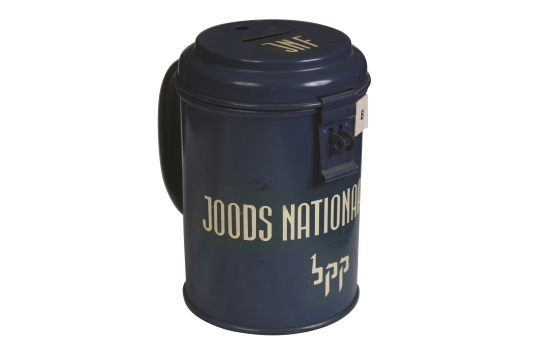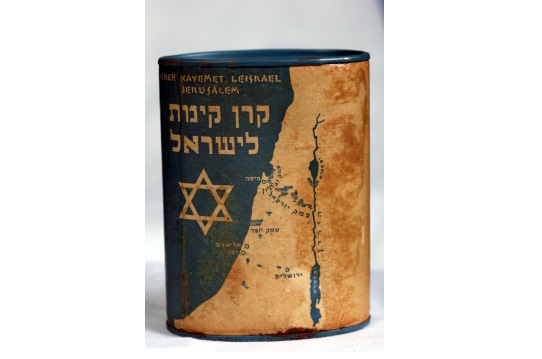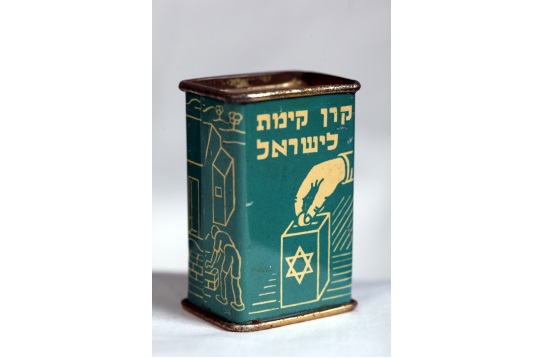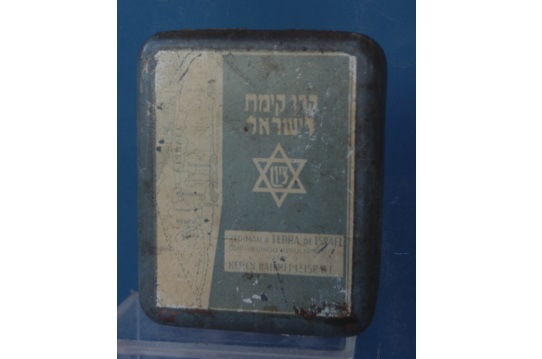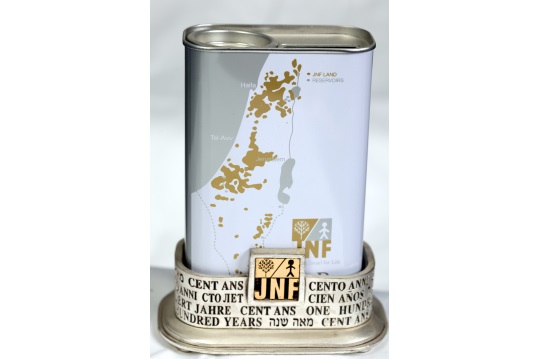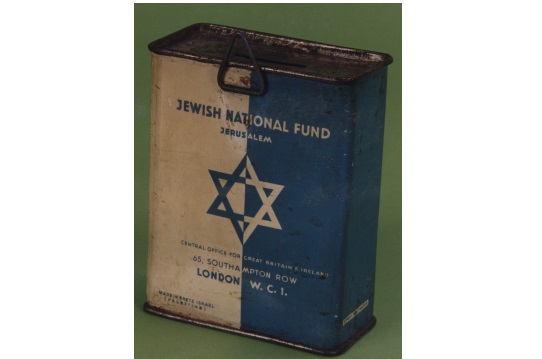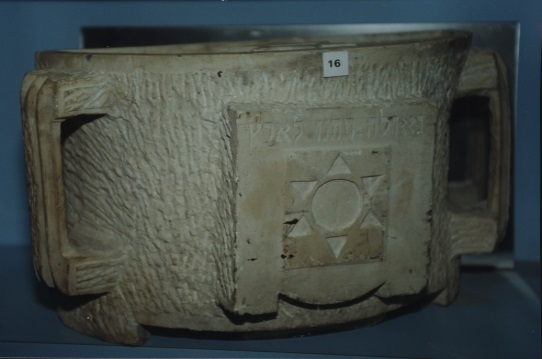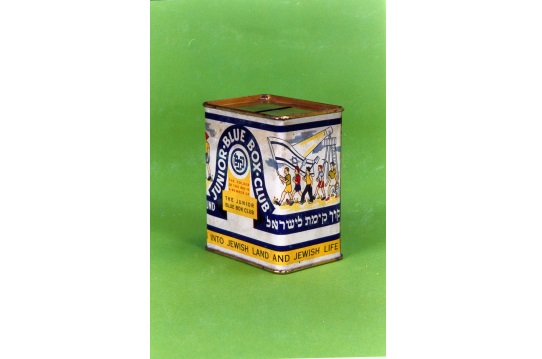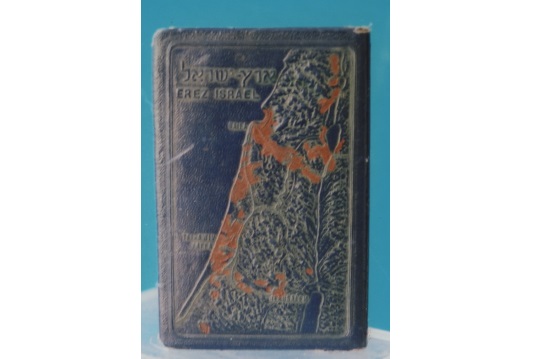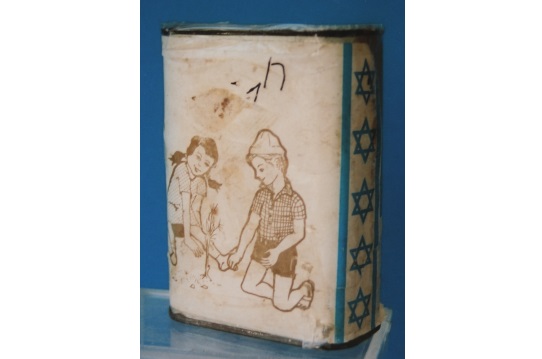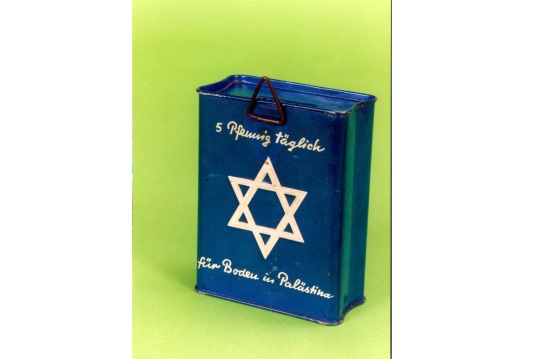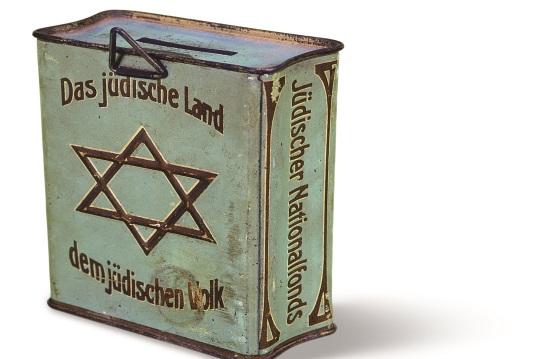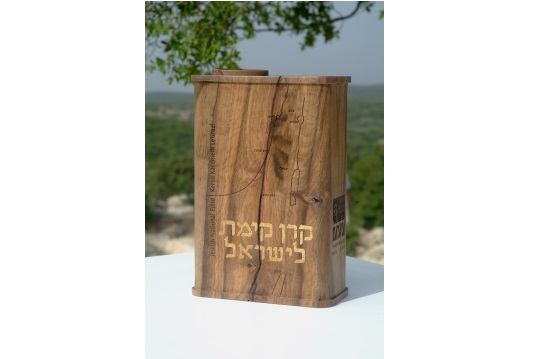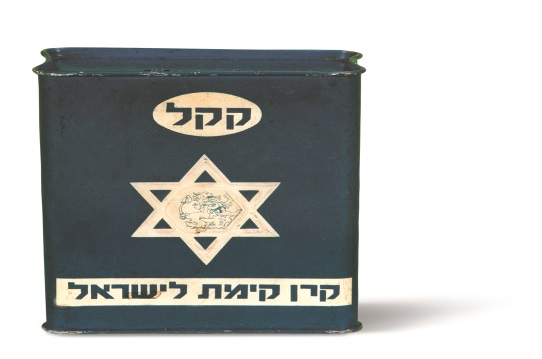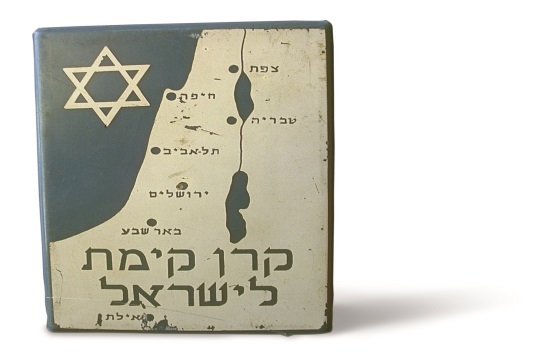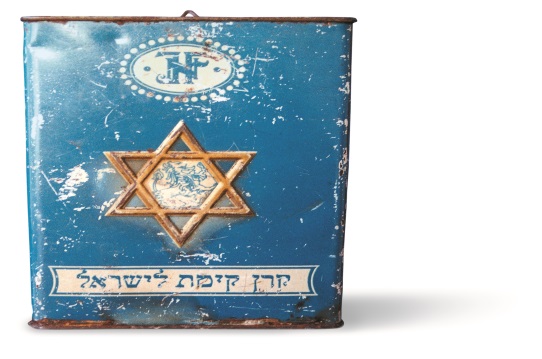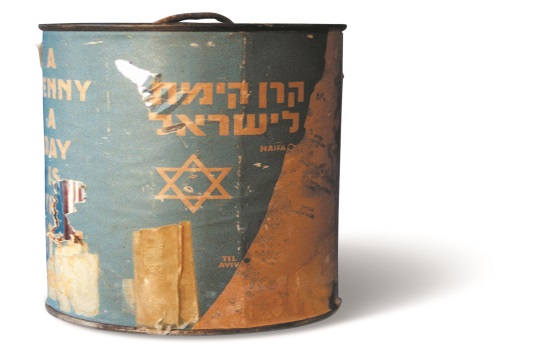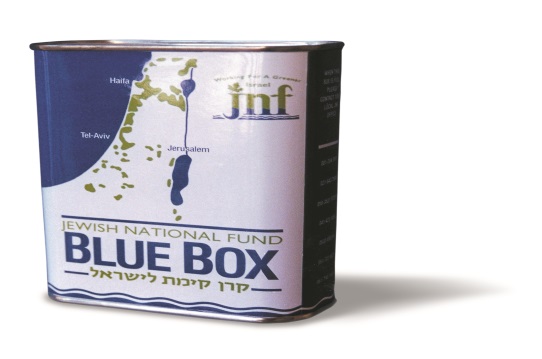The Blue Box, more than any other artifact, symbolizes KKL-JNF.
The Blue Box was initiated by Haim Kleinman, a bank clerk from Nadvorna, Galicia, who placed a box in his office to collect funds for redeeming the Land of Israel, following the establishment of Keren Kayemeth LeIsrael at the Fifth Zionist Congress in Basil, in 1901, The Blue Box, in all its various designs, has continued to serve as a fundraiser in Diaspora homes and Jewish institutions in Israel and abroad; a cherished means to realize the Zionist vision of establishing a state for the Jewish People. Credit for these photos goes to the KKL-JNF Photo Archive, Jerusalem.
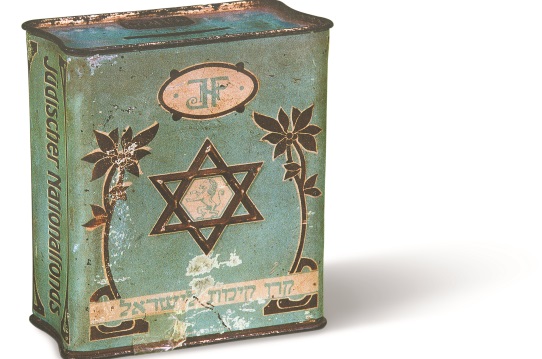
The phoenix tree box is the second serial series of boxes, produced by the KKL-JNF in 1908 approx. In the beginning the box was produced in Germany, but later it was produced in other countries like the U.S.A. The box was in use until the end of the first decade of the 20th century, when it was replaced by the blue box. Photography: Dan Schaffner
Download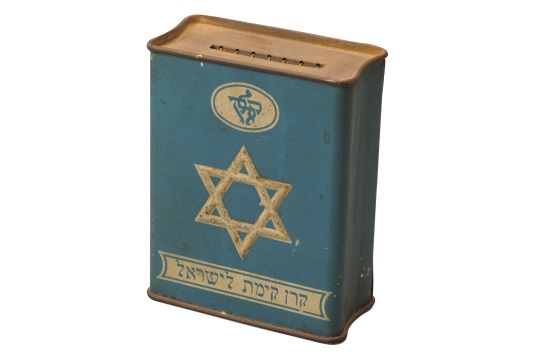
“The blue box”, which gave to the KKL-JNF box its famous name, because of its color, first appeared in 1912 approx. and enjoyed great popularity. Until the mid- 30s, the blue box was produced in more than one million unites, in dozen different models, and different countries. This Blue box was made by Alfred Zaltzman, Jerusalem, 1927.
Download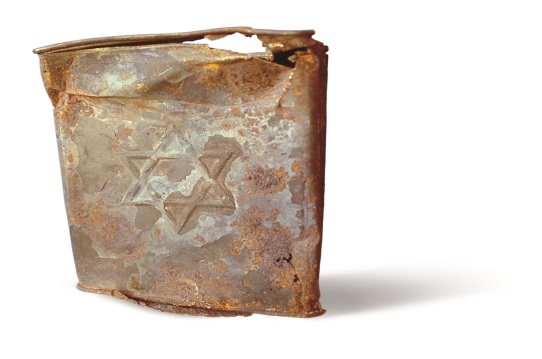
A blue box that was found in the ruins of the Warsaw ghetto by a delegation of Israeli researchers, after the establishment of the state of Israel.
Download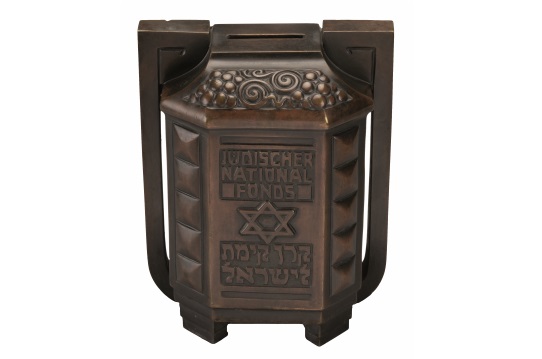
Before of the first world war the KKL-JNF produced, in a very limited number of copies, a special box of excellence made of bronze, that was distribute to the KKL-JNF Seniors. The box was produced by the German- Jew sculptor - Leopold Fleischhacker.
Download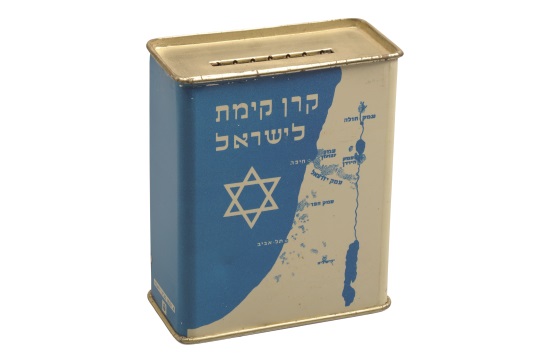
This box came into use in the mid-30s. The map of Israel appears there for the first time, and the lands that where redeemer by the peoples donations, where marked on them. The box was called “the new box”. The new box and the blue box were used at the same time.
Download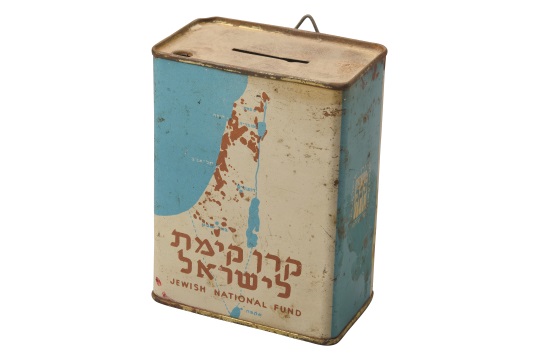
“Aqaba” boxes began to within the international struggle for the establishment of a Jewish state in Eretz Israel around the year 1946. For the first time, there was a map of Eretz Israel up to the Red Sea. The box in the picture was manufactured in England and distributed in South Africa too; the uniqueness of the box is the thickness of it and the slot for rolled-up bills.
Download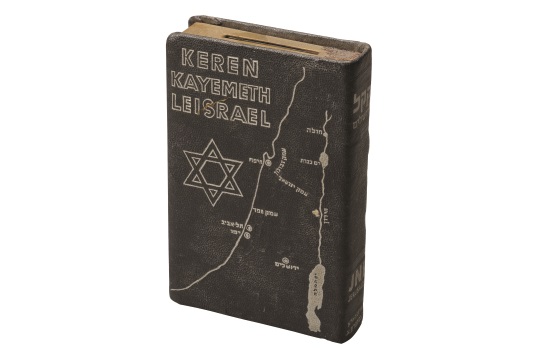
These boxes were produced by the KKL-JNF in the 20s of the 20th century for wealthy Jews, who bought the “decorative boxes” and placed them in their homes with a promise to make a notable contribution every month. This model was produced by Künigshofer in Tel Aviv between the years 1935 to 1955.
Download
A box from pure silver that was made in a unique and single copy in France, and was given to Josef Fisher, the head of the KKL-JNF in France during the years 1925-1950, when he retired. Provided by Amir Schorr, from the KKL-JNF and the grandson of Josef Fisher. Photography: Amir Schorr. JNF Photo Archive
Download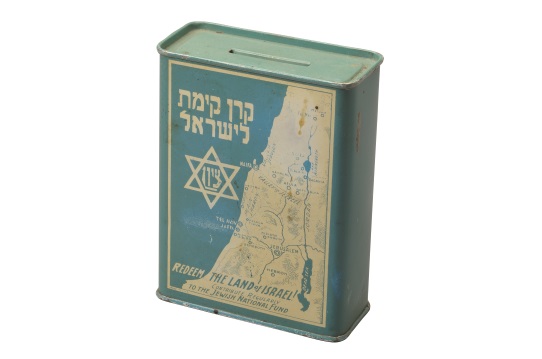
In the 30’s the U.S. KKL-JNF branch began to self-produce KKL-JNF boxes. This box was issued throughout the 30s and the 40s in the U.S., Canada and possibly in other countries. On the box front was a map of Eretz Israel from 1934.
Download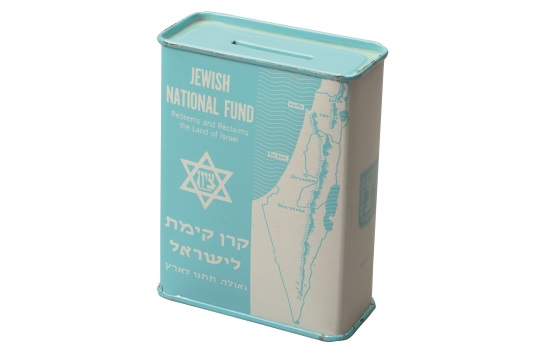
After the establishment of the state of Israel, the U.S. KKL-JNF branch decided to issue a new box that will display the borders of the new born state. The KKL-JNF appointed the graphic artist Noah Bee who took part in the design of the banknotes of Anglo Palestine Bank, which were the official money in the young state, end of the 1950s.
Download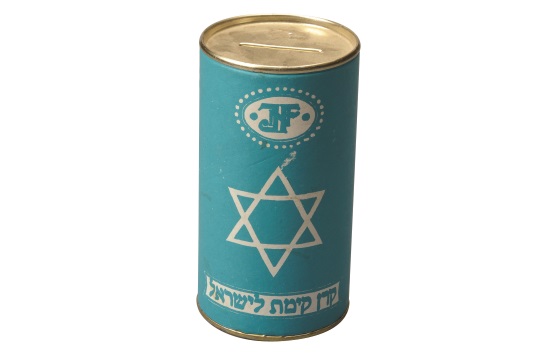
The Blue Box from the 1960s, United States. Easy to hold while collecting funds in the street.
Download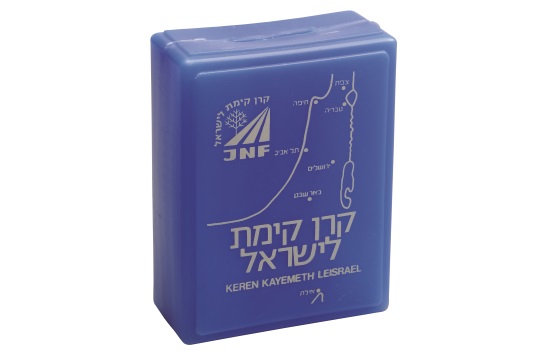
In the 80’s when the fund-raising was low and the boxes production was expensive, the KKL-JNF issued a box which was economical, single use, and unable to greening. The aim was to keep fund raising while reducing costs and preserving the educational effect.
Download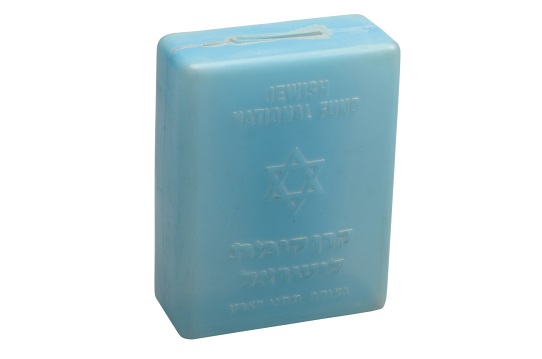
The first box (left Side) of this type was produced from a transparent and soft plastic which enabled supervision of the contributions accumulation. As a result of the dissatisfaction of the first plastic box, this box was produced from much harder plastic. This box (on top) bearing the map of Israel. This box was not used for a long period of time, and few have survived because of the fact that most of the boxes were cut to empty them.
Download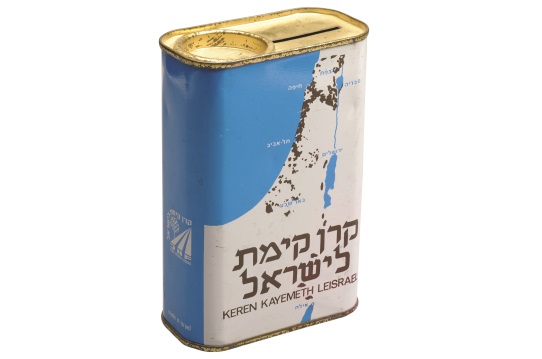
The KKL-JNF modern box first appeared in Israel during the 80s. This box was sealed from the tendency to simplify the collection process, and from the confidence in the boxes owners self collection. This box was served as a model to dozens of models in many countries all over the world, while maintaining the design elements with little variations.
Download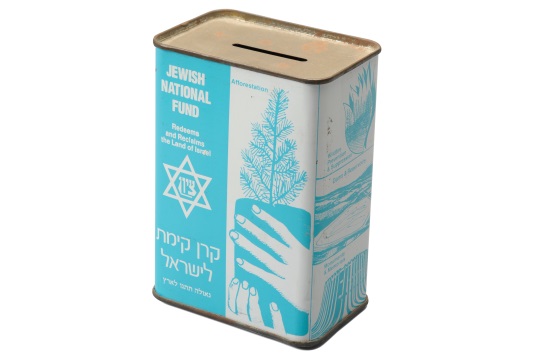
This box, which issued in 1990 by the U.S KKL-JNF, was part of the trend to lower the production costs and the transition to boxes with lids and not locks. The goals of the KKL-JNF are written on the box. In U.S.A and Canada, this box has different models with different drawings.
Download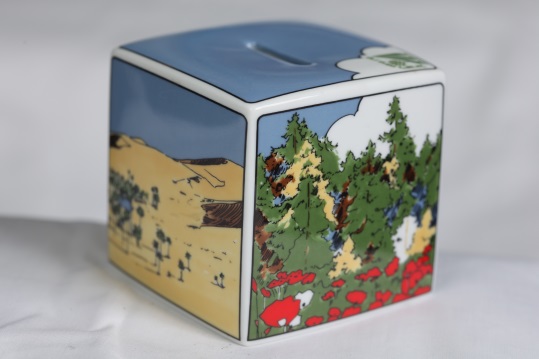
Porcelain box, Tiffany & Co., special edition; 1,200 copies; designed by a Japanese artist.
Download